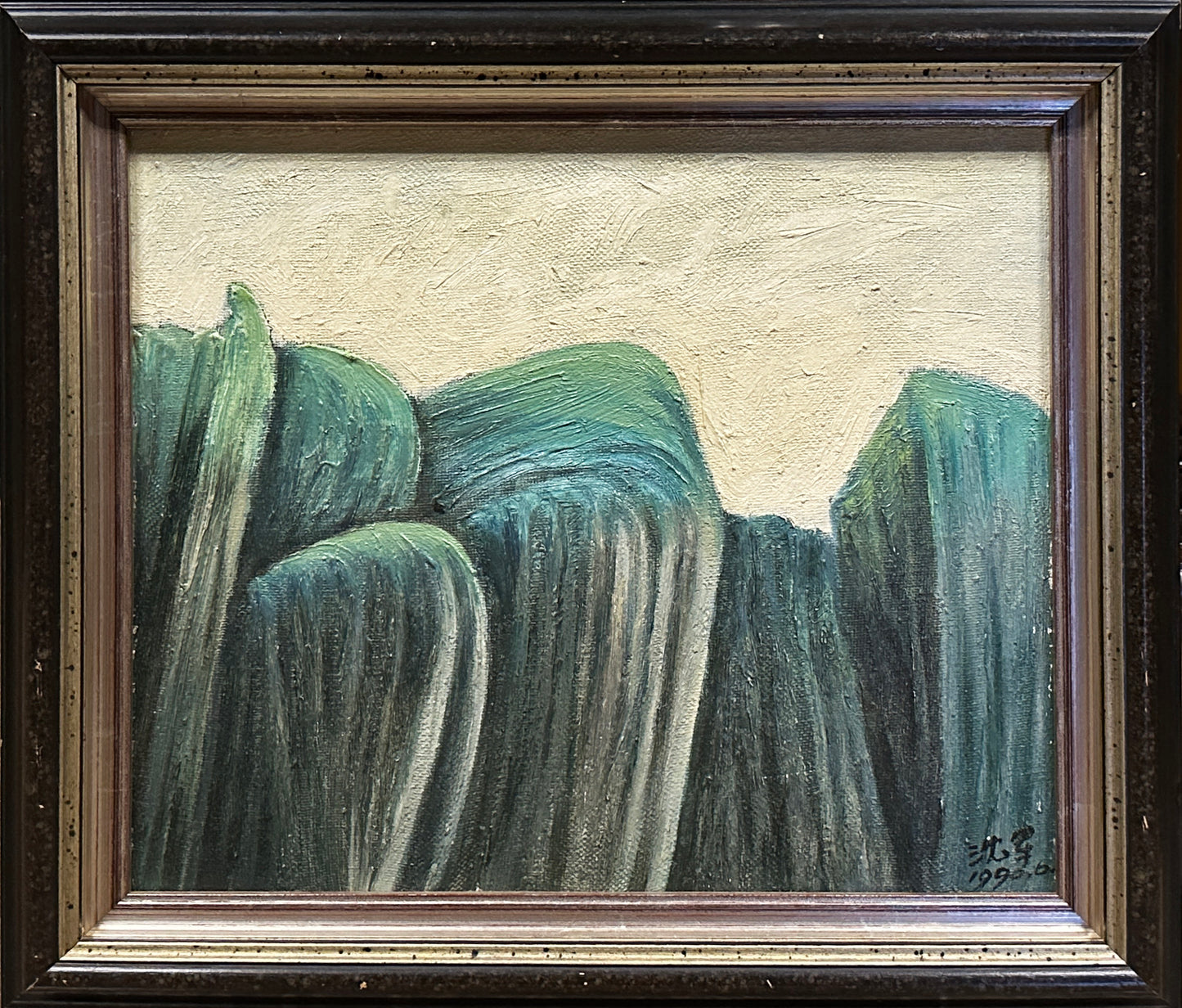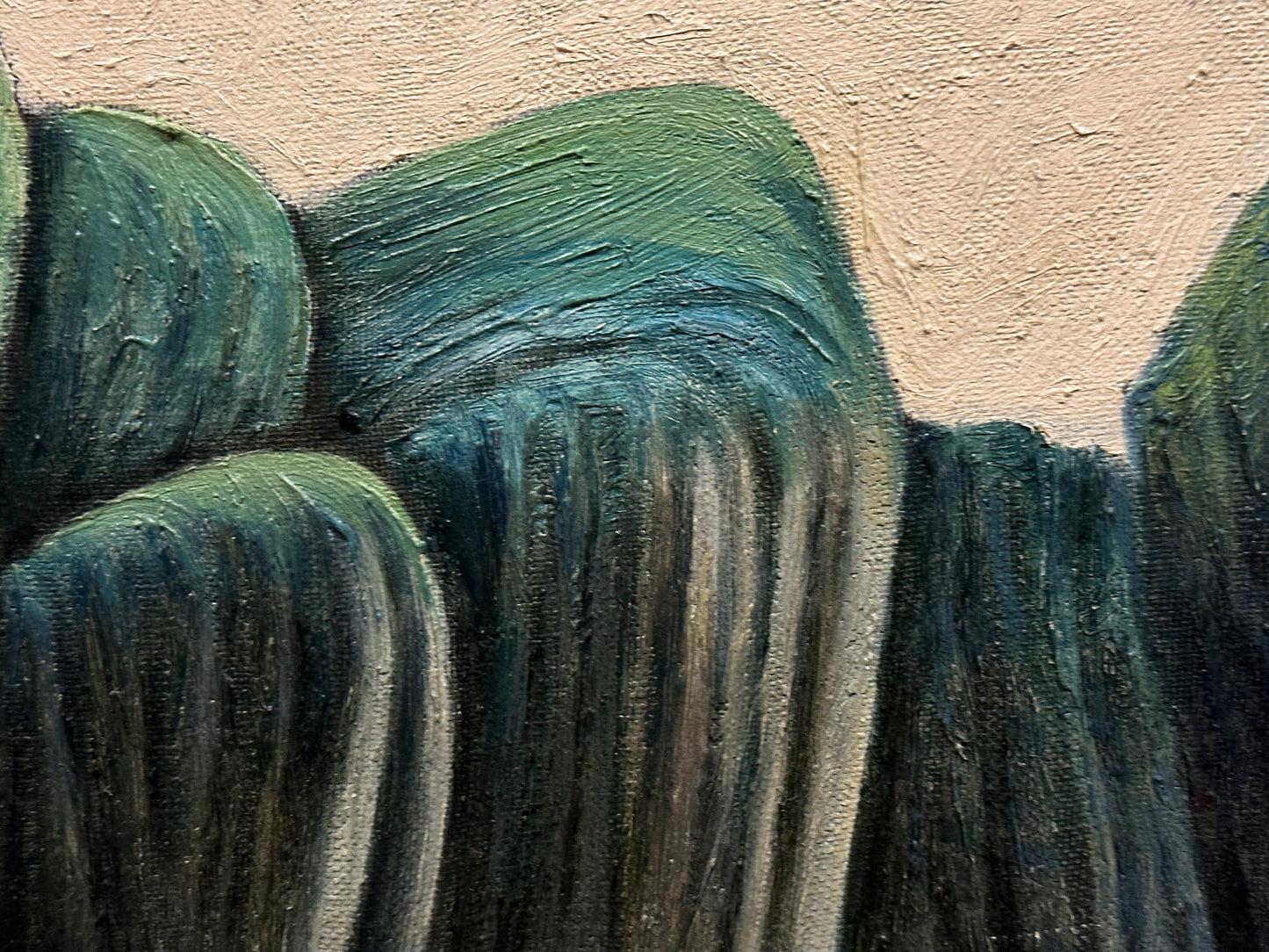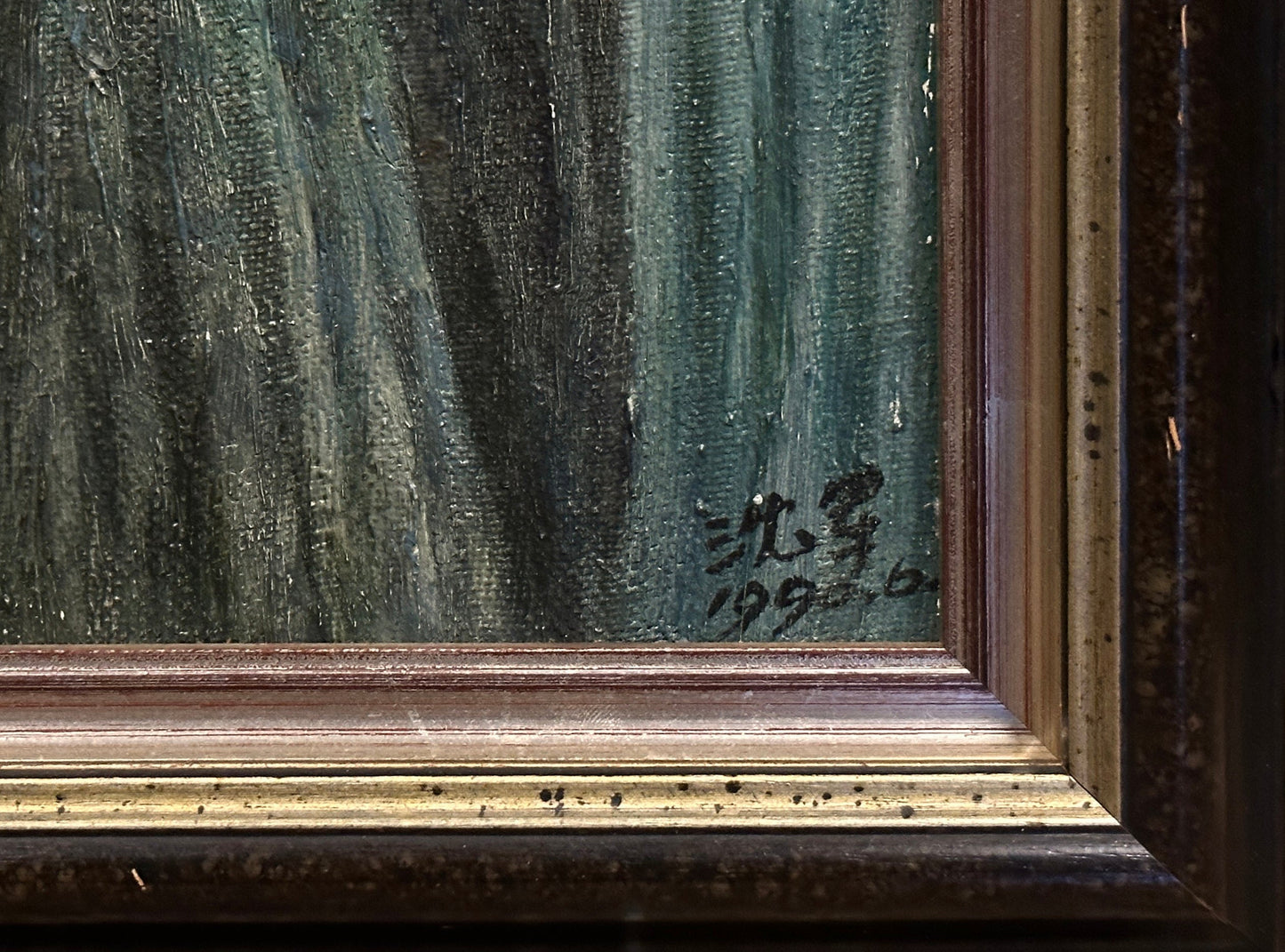bqt.art
Cultivation of Stones, 1990
Cultivation of Stones, 1990
Couldn't load pickup availability
Share
Artist: Shen Jun 沈軍
Title: Cultivation of Stones | 頑石的耕成
Materials: Oil on canvas
Size: 26 x 41 cm | 10 x 16 in (Framed)
Rarity: Unique
Medium: Painting
Signature: Hand-signed by artist
Condition: Good
Frame: Yes
The oil painting titled Cultivation of Stones by Shen Jun strikes a delicate balance between abstraction and representation, inviting viewers to reflect on the interplay between natural forms and human intervention. Below is an in-depth analysis of the artwork:
---
1. Subject Matter and Interpretation
At first glance, the title Cultivation of Stones by Shen Jun presents an intriguing paradox. Cultivation is typically associated with life, growth, and agriculture, while stones are emblematic of inanimate and unyielding material. This juxtaposition sets the tone for the painting, which evokes a surreal interpretation of the landscape.
The focal forms on the canvas resemble large, rounded stone-like shapes, sculpted into flowing vertical masses. These forms suggest a cultivated or arranged environment, perhaps symbolizing humankind's attempt to impose order on nature. Alternatively, the shapes may represent the persistence of natural forces, shaped over time by erosion, weathering, or other natural processes.
The ambiguity of the subject matter invites interpretation: Are these stones shaped by nature or human hands? Are they literal stones or a metaphor for something deeper, such as resilience or permanence?
---
2. Composition and Structure
The composition is simple yet dynamic, with the tall, curving forms occupying most of the canvas. The verticality of the shapes draws the viewer’s eye upward, suggesting a sense of growth or ascension, even though the forms are stone-like and static. This creates an interesting tension between movement and stillness.
The negative space at the top of the canvas, where the pale sky meets the stone-like forms, provides a sense of openness and contrast. This empty space allows the shapes to breathe and emphasizes their monumental presence, as though they are rising from the earth into a vast, undefined sky.
---
3. Color Palette and Atmosphere
The painting employs a limited but effective color palette dominated by earthy greens, blues, and neutral tones. The greenish hues lend the stone forms an organic quality, blurring the line between rock and foliage. This duality reinforces the theme of ambiguity—are these stones, plants, or something in between?
The pale, slightly textured sky contrasts with the darker, denser stone forms, creating an atmospheric balance. The warm undertones in the background give the painting a quiet, meditative quality, suggesting timelessness and serenity.
---
4. Brushwork and Texture
The brushwork is expressive and fluid, particularly in the rounded forms. The sweeping vertical strokes give the impression of natural flow or erosion, mimicking the texture of weathered stone or the striations in a rock face. This technique adds a sense of movement and rhythm to the otherwise solid masses, making them feel alive and dynamic.
The texture of the canvas is visible, particularly in the background, where the roughness enhances the organic, earthy feel of the painting. The brushstrokes are deliberate yet loose, allowing the forms to suggest rather than dictate their identity.
---
5. Emotional and Symbolic Resonance
The painting evokes a sense of mystery and contemplation. The monumental forms feel ancient and enduring, suggesting themes of permanence and resilience. At the same time, the title and the shapes imply human interaction with nature, raising questions about our relationship with the environment. Is the cultivation of stones an act of creation, or does it signify the futility of trying to control the uncontrollable?
The upward movement of the forms could also symbolize growth, transcendence, or a spiritual journey, as though the stones themselves are striving toward the sky. This interpretation lends the painting a metaphysical dimension, encouraging viewers to reflect on themes of transformation and harmony.
---
6. Framing and Presentation
The dark, rustic frame complements the earthy tones of the painting, grounding the work in an aesthetic of natural beauty and timelessness. Its simplicity ensures that the focus remains on the painting, while its texture and color echo the organic forms within.
---
Conclusion
"Cultivation of Stones" is a compelling exploration of the boundary between nature and abstraction, permanence and transformation. Through its dynamic composition, earthy color palette, and textured brushwork, the painting invites viewers into a meditative space where they can ponder the relationship between human creativity and natural forces. It is a work that resonates on both a visual and philosophical level, offering layers of meaning that unfold with closer examination.










